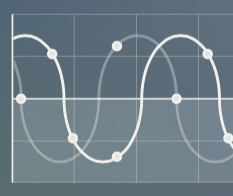11.21.2025
Sausage casings bulletin, November 21, 2025

...

Leather demand continued to slide in June per the JLDI, with U.S. shoe, car and furniture sales showing declines, which was somewhat offset by upticks in Chinese imports and exports. Car sales continued to decline on a year-over-year basis, dropping 12%, despite solid demand for automobiles. Furniture sales were nearly unchanged in June after peaking in March 2017.
Consumer sentiment moved higher in June, which did not spill over into retail sales. Consumer sentiment printed at historical highs in the first half of 2017. The first six months of the year yielded the highest average for the index since the second half of 2000.
U.S. Auto sales declined for a fourth consecutive month in June. The industry’s seasonally adjusted annualized rate of sales at 16.51 million units was the lowest rate since February 2015. It came in below expectations of 16.6 million vehicles and 2% lower than the June 2016 figure.
U.S. June retail sales fell 0.2%, weighed down by declines in accessories, clothing stores and supermarkets. Retail sales rose 2.8% year-on-year in June. Chinese trade data was solid in June. Exports increased by 11.3% year over year and imports increased by 17.2% year over year in dollar terms.
Economic Data and Monetary Policy
Despite mixed U.S. economic data, the Federal Reserve raised interest rates in June. Jobs data continues to remain strong, but wage inflation has been tepid, which could keep the Federal Reserve on the sidelines for the balance of 2017. The markets are also focused on the European Central Bank (ECB), which is scheduled to end its bond purchase program next March. Investors will be looking for clues from both the ECB President Mario Draghi and Fed Chair Janet Yellen when they both speak next at the Jackson Hole central bank conference in late August.
Looking Forward
The Jackson Hole central bankers conference is anxiously awaited by the markets for an update on the policy course of core central banks, and especially the Federal Open Market Committee (FMOC) and the ECB. General expectations are for no fresh insights from either Chair Yellen or President Draghi. Yellen could reference a policy course, but she is generally seen keeping to the script from the FOMC statements and Fed minutes, as well as from other Fedspeak, indicating the balance sheet unwind will begin soon, likely in September. It will be instructive to hear her assessment on inflation and if the outlook has dipped further, relative to her cautious outlook from the July Humphrey-Hawkins report (The Full Employment and Balanced Growth Act). Meanwhile, Draghi, the ECB central bank President is expected to focus on the symposium theme, while holding off on discussing any changes to the central bank’s balance sheet or other policy discussions.
Chinese trade data was softer than expected in July, which will not bode well for leather demand. China reported July exports were up 7.2%, while imports were up 11.0%. Expectations were for exports to climb 10.9% while imports were forecast to increase 16.6%, in dollar terms.
To produce an index that reflects perceived demand for leather, the JLDI combines changes in the shoes sales, furniture and automobile market given assumption made about the makeup of these markets as leather is concerned. Fluctuation in shoes sales, auto sales, and furniture sales will change the demand dynamic for leather globally.
The JLDI
The Jacobsen derived its leather demand index by using an oscillator that captured an index from 1-100. The index is created from year-over-year changes to each of four time series.
The JDLI readings are on the right axis accompanied by prices of Heavy Texas Steer on the left side.
Australia
The hide market in Australia remains slow as suppliers await the return of Italian tanners and looks for direction from the ACLE in Shanghai, China, August 30 through September 2. One supplier noted doing a decent amount of business, although it’s all the cheaper selection of hides that are moving. Hides able to be made into leather at $1 per sq. ft. were easily sold, but anything with a better grain was harder to move. Sources say Australia’s hide market shows similarity to the US market, which appears to have bottomed last week with prices stable for the time being.
Slaughter remains strong with last week’s Eastern States total up 14% from a year ago at 126,215 head. Queensland killed 65,486, up 18% on same week last year. New South Wales had a kill of 29,450, up 19% and Victoria and South Australia killed 26,963, up1%.
Beef prices are dropping as more supply hits the domestic market. Cattle prices remain high.
**Visit our International Hide & Leather Bulletin to see market news for additional countries across globe.**
Aug 23 (China Daily) BERLIN — BMW Remains Global Most Profitable Automaker Despite ‘Dieselgate’ Cartel Scandals: Study
German car producer BMW Group is the most profitable automaker worldwide despite scandals, a study shows on Tuesday. Despite being at the heart of scandals surrounding diesel engine emissions and recent allegations of illegal collusion among German automotive firms, BMW had a profit of about 5.58 billion euros ($6.6 billion) on a revenue of 49.25 billion euros in the first half of the year. According to the study of the accounting firm Ernst & Young (EY), BMW is then followed by Suzuki, Daimler, GM and Volkswagen. READ MORE
Aug 22 (International Leather Maker) MICHIGAN — Adient to Acquire U.S. Headquartered Seating Manufacturer
Automotive seating Group Adient announced that it has signed a definitive agreement to acquire Michigan, U.S., headquartered Futuris Group. The purchase price is approximately US$360 million, including the assumption of approximately US$18 million of net debt. READ MORE